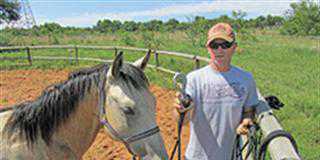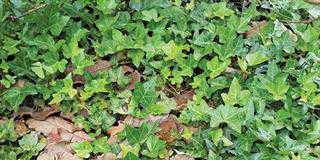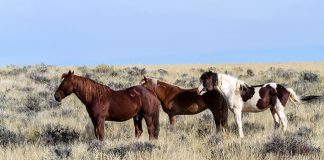Between the outer layer of the hoof and the bones inside, is a circle of page-like projections that attach the hoof wall to the coffin and pedal bones. These projections are the hoof laminae, and inflammation here can result in severe suffering or even death. There are several causes. The most common is over-eating green grass or fresh lucerne, as well as large amounts of oats or maize rations.
This overdose of carbohydrate causes the rapidly multiplying gut bacteria to release endotoxins.Laminitis can also occur within hours of foaling if the afterbirth stays in the uterus and bacteria multiply. Bacterial endotoxins then cause tiny capillaries to contract, preventing the flow of blood to the laminae.
The resulting shortage of oxygen causes tissue death. Fluid escapes into the hoof from the damaged tissue and inflammation sets in due to increased pressure inside the hoof. If the laminae are destroyed, the hoof or pedal bone comes loose and can rotate so that the front edge points downwards into the sole. The horse will never fully recover and may have to be put down.
Early signs
The inflammation and swelling inside the hoof is extremely painful. The most common early sign is that the horse stands like a rocking horse, with its front feet leaning forward and is reluctant to move. The hooves feel warm or even hot and there’s often a distinct pulse in the digital arteries on each side of the pastern.
It’s essential to cool the hooves. The traditional approach is to use a hosepipe or, if the horse won’t move outside, plastic containers filled with cold water. Cotton-wool soaked in cold water can also be used externally as a compress, but this is usually difficult as you have to hold it in place. It’s quite hard to pick up the feet of a horse with laminitis, or put them into containers, as it’s extremely painful for it to stand on three legs. You will definitely need two or three people to help. Often the horse lies down, so you should ensure the bedding is deep.
Veterinarians use non-steroidal anti-inflammatory drugs (NSAIDs). At one time cortisone was used, but it’s now considered to make the condition worse as it slows the healing process. Laminitis isn’t cured by a few injections. The first step is to remove the cause of the disease. All concentrate feeding should be stopped. The horse can be fed 1kg of bran mash with enough warm water to make it into a porridge, with two tablespoons of Epsom salts added. This acts as a laxative to clear the gut of fermented carbohydrates and bacterial endotoxins.
As the horse will have a loose stool, plenty of clean fresh water is needed. If the horse is lying down, water should be offered in a dish hourly, or your veterinarian may put it onto an intravenous drip. The NSAIDs are usually effective within an hour or two, but are usually injected again eight hours later. It’s very important not to exercise the horse, but to keep it in a stable for several days or weeks, depending on the severity, to allow the laminae to stabilise. During the recovery phase horses should be fed three or four small meals a day with a restricted calorie intake.
Long term prognosis
In the case of overweight horses, particularly with shaggy coats, hormone levels should be checked as they could have Cushing’s disease. After recovery it’s advisable to X-ray the hoof to check if the pedal bone has rotated. If it has, it’s unlikely the horse could be used for hard work, especially jumping, as the concussion would be too painful and could cause the pedal bone to go through the sole.
Dressage and Western riding may be acceptable as they are done in a sandy arena. In milder cases, specialist shoeing may be needed, usually in consultation with a veterinarian and farrier. Mild cases of laminitis are a warning to adjust a horses diet to tef hay and a maize-free ration. The horse should most likely be kept off kikuyu for the rest of its life.
Contact Dr Mac c/o [email protected].













